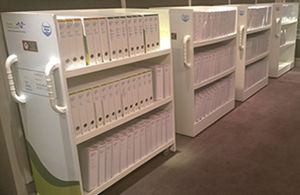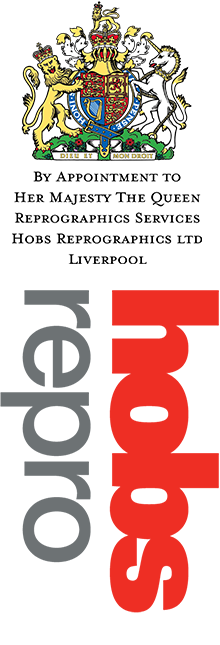
Challenge
Thames Water has a company called ‘Thames Tideway Tunnel’ to organise the planning of a new Super Sewer. Disecting a 25km route through the maze of London’s underground tunnels is a truly huge engineering task and has a vast number of stakeholders.
Years of work had led up to the crucial stage of applying for development consent; the proposal would be one of the largest applications ever submitted to the Planning Inspectorate, with over 55,000 pages and ten copies required.
Thames Water wanted to keep the information organized, easily searchable and present the information in the best possible way to all stakeholders. The indexing system would also need the ability to expand as, if consent was granted, more documents would be added over the next 12 months.
Many changes and additions to the document were possible. To ensure delivery of all ten copies within the tight timeframe, a structure and overall production workflow, was required.
Key Challenges
- Estimated 55,000 A4 pages of information
- A2 drawings
- 10 exact copies required
- Multi-level indexing required
- Documents will be handled for 6 months during public consultation
- Strict delivery date
Solution
Hobs assigned a project manager at an early stage enabling a high level of organization throughout all aspects of the document planning, graphic design and production process.
Due to the large volume of individual files and possibile changes to page counts, it was agreed that a colour coded folder structure was required. These folders would be broken down into the main sections of the bid, printed on all sides with Thames Water branding, and would be housed in matching printed slip-cases. This would further protect the documents whilst aiding lifting and delivery.
The Hobs graphic design team created templates for the documents in Word and completed the artworking and layout of the diagrammes and pictures. They also ensured that each Slip-Case and folder had identification text printed onto both the spine and front cover as part of the referencing system, along with the folder number and section. To further aid the referencing, colour coded and clearly labelled bespoke dividing tabs were printed, cut then inserted.
Whilst the text of the document was printed in full colour onto A4 paper, an A2 format was used for architectural drawings, engineering plans and data tables to provide clear viewing of these documents.
Each complete set was housed on a set of six branded bookcases which were printed in full colour and made specifically, along with the larger A2 documents organised into two document hanging trollies.
Finally, a 34 page index booklet was printed to allow the users to search for the files they required. This referenced the colour coding, folder name, folder number and tabbed section of each section.
The Result
The ten complete sets were produced and delivered on time and Thames Water were subsequently given the go-ahead to start building London’s super sewer.
Chris Marlow at Thames Tideway Tunnel commented “The planning inspectorate commented that the application was one of the most organised and well presented they had received. We are delighted with the quality of work that Hobs have done for us. It’s a true testament that the copies held for public viewing stood up to the manual handling over a 6 month period.”
With subsequent additions and further presentations to the planning inspectorate, each complete set has now grown to approximately 85,000 pages.Many further partial sets have also been produced.
The entire bid was also made into an interactive DVD, with printed discs and sleeves. A digital interface was created on the DVD’s to allow the user to search for files by various methods, by section, area, or by choosing an area along the river Thames from an interactive map.

